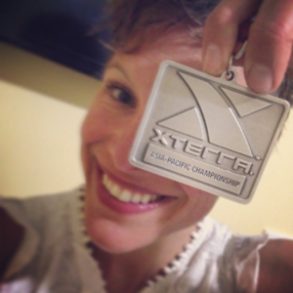The Super-Charged Athlete — How To Speed Up Recovery
How To Speed Up Recovery
by Kate Strong, World Champion, Long-distance Women’s Triathlon
It is many athletes’ dream to win every race they enter. Unfortunately, there are many stories where sportspeople lose their way and turn to illegal enhancers to gain that extra edge over their competitors and a higher possibility of winning.
Personally, I feel any person who turns to illegal drugs to win is missing the point of why we compete in the first place.
Yes, it is great to earn a podium position, but the primary drive to compete should be to better ourselves not to amass gold medals. In every race I enter, I am competing to be the best I can be and if that merits a podium finish then great; it’s the icing on the vegan cake! If not, then at least I know that I delivered my A-game and there just so happened to be someone better out there on the day. Entering a race knowing I’ve cheated defeats the objective of competing and why I am on this sporting journey. In essence, I would see the victory as hollow as I would have cheated myself first and foremost.
In saying that, I am constantly striving to improve myself and discover the most effective (and legal) way of achieving that small edge over my competitors by assessing my daily physical, mental and nutritional routine.
It seems the main difference between professional athletes and us ‘regular competitors’ isn’t necessarily the number of hours they train weekly, but the amount of time they can spend resting. It seems that winners don’t train more; they rest more.
By reviewing my lifestyle and comparing it to the lifestyle of a professional, I’ve highlighted four main areas that I can apply to allow my body to recover quicker after a hard day training.
1. Soak
By soaking our legs in ice water, or cool water with Epson salts, for 10-15 minutes increases blood flow to our legs activating muscle repair quicker than doing nothing at all. If I’m near the ocean, I cheat and use a local salt bath: the ocean!
2. Sleep or Rest
Our body repairs itself during sleep. If your lifestyle doesn’t permit sneaky afternoon siestas or regular early nights, the next best thing is to reduce the amount of physical activity you carry out during the day: rest or sit down more, walk slower and avoid doing more sport.
3. Stretch or Recovery Training
After a workout, our muscles contract and restrict blood flow which, in turn, reduces the speed of recovery for our body. After a workout, I follow a quick stretching routine that covers the main muscles I use during triathlon. If I am unable to stretch due to time limitations, I ensure within 24 hours, I carry out light recovery training in the same sport the next day.
4. Sustenance
What we eat within 30 minutes after exercise is of paramount importance. Eating a high protein meal or snack in this 30-minute window stimulates muscle regrowth and repair.
To put into action the above, I have to get organized. Leaving preparation to last-minute invariable meant I either carry out everything too late, or not bother as I’m too tired.
The key is planning. Every Monday, I sit down and write my shopping list. That same evening I bulk-cook and portion the food to ensure it is sufficient for all my training sessions that week.
For sustenance, I created some delicious vegan recipes for a quick and easy protein fix including chia seeds, quinoa, salad or beans. These are available at Strong Kate!
Until next time… Enjoy!
Kate Strong























Recent Comments